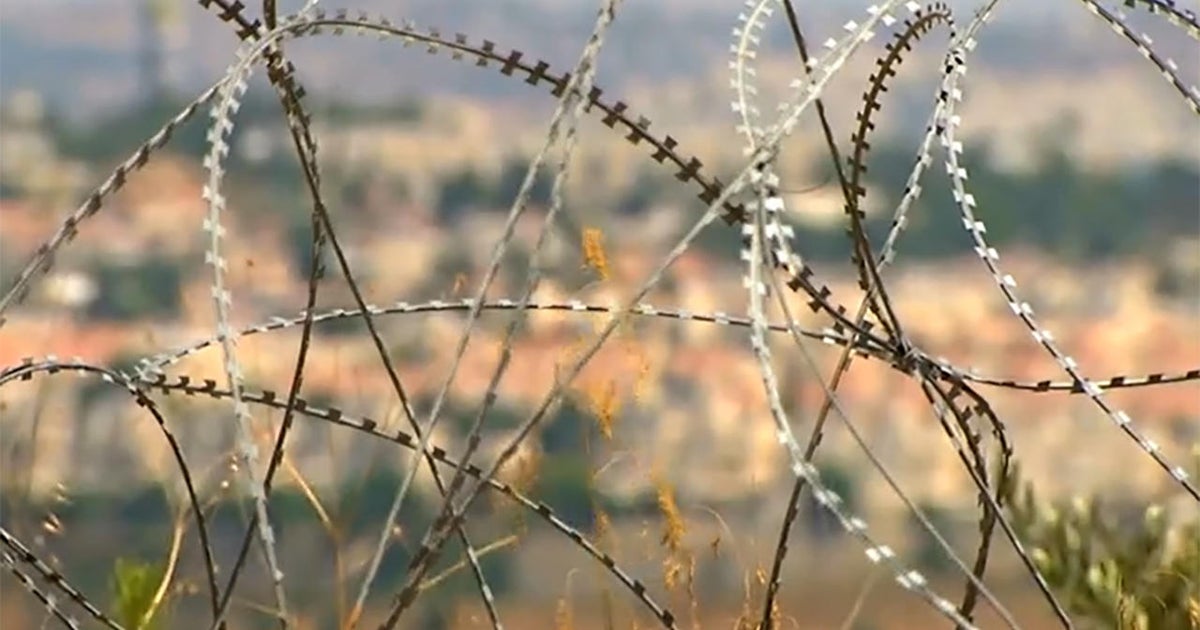California fires spread quickly, evacuation orders lifted in other parts of West
SANTA MARIA, Calif. -- A pair of California wildfires have quickly spread, threatening hundreds of homes and forcing evacuations at a popular lakeside campground and a summer camp where flames temporarily trapped children and counselors, a fire official said.
In other parts of the West, evacuation orders were lifted in Colorado and Montana towns threatened by wildfires, while air and ground crews battled a growing grass fire in northwestern Colorado.
The fire that started early Saturday afternoon in California's Santa Barbara County had spread to both sides of Highway 154 and was "completely out of control," county fire Capt. Dave Zaniboni said. About 90 children and 50 counselors were stuck at the Circle V Ranch and had to take shelter there until they could be safely evacuated.
The Santa Barbara County fire was one of three in California that grew quickly as much of the state baked in heat that broke records. A record that stood 131 years in Los Angeles was snapped when the temperature spiked at 98 degrees downtown. The previous record of 95 degrees was set in 1886, the National Weather Service said.
Excessive heat sent Southern Californians flocking to beaches and in search of water, shade and air conditioning to escape the heat. Forecasters warned that triple-digit temperatures up to 110 degrees would be common in some inland areas and could be deadly for the elderly, children and outdoor workers. Air quality reached unhealthy and very unhealthy in areas inland from Los Angeles.
Brutally hot temperatures have been recorded across the Southwest, CBS News' Chris Martinez reported. Phoenix hit a high of 118 degrees Friday, breaking a 112-year record. Palm Springs, California, reached 122 degrees, one of its hottest days ever. And in Death Valley, the mercury soared to 127.
"We are going to see an increase in calls during this peak heat," said Los Angeles Fire Captain Erik Scott.
Scott said many people ignore the very real risks of spending too much time outdoors. And even for the most seasoned veterans, "firefighters are not exempt to this heat themselves," Scott said.
"Firefighters take with them to a fire 100 extra pounds -- you have temperatures up to 112 degrees right now, it's very challenging," Scott said.
High temps and dry gusts tripled the size of another Santa Barbara wildfire to nearly 30 square miles over eight hours and forced evacuations of about 200 homes in a rural area east of Santa Maria, fire spokesman Kirk Sturm said.
After five years of severe drought, California got a big break with record rainfall and snowpack in parts of the state this year that has delayed the start of fire season in some places, but has also led to explosive vegetation growth that could fuel future fires.
"The plan is to hit it with air tankers to keep it from moving to the south and to the east," said Zaniboni. "There's less heat and less wind, which makes things a little easier."
In Northern California, a Butte County wildfire swept through grassy foothills and destroyed 10 structures, including homes, and led to several minor injuries.
Burned-out pickup trucks were left in ashes, surrounded by charred, leafless trees. The metal frame of a mobile home and a vintage stove were left standing in scorched debris at one site.
The blaze about 60 miles north of Sacramento grew rapidly to more than 7 square miles and was nearly 20 percent contained, according to the California Department of Forestry and Fire Protection. At least 750 homes remained threatened and hundreds more were evacuated.
"We're hopeful about holding the lines," fire spokeswoman Mary Ann Aldrich said Sunday. "There's been progress."
The area burning was about 10 miles south of Oroville, where spillways in the nation's tallest dam began crumbling from heavy rains this winter and led to temporary evacuation orders for 200,000 residents downstream. On Saturday, authorities issued an evacuation for about 250 homes threatened by the fire.
In the middle of the afternoon, Santa Barbara officials sent out alerts to residents and campers near Cachuma Lake to evacuate as the fire started near Whittier Camp, Zaniboni said.
The lake, which was nearly bone dry last summer after the severe drought, is popular for camping, boating and fishing. Residents were also ordered to leave cabins in the Los Padres National Forest.
In British Columbia, firefighters were contending with more than 200 wildfires burning in British Columbia that had destroyed dozens of buildings, including several homes and two airport hangars. The three biggest fires, which ranged in size from 5 to 8 square miles, had forced thousands of people to flee.
"We are just, in many ways, at the beginning of the worst part of the fire season and we watch the weather, we watch the wind, and we pray for rain," outgoing Premier Christy Clark told reporters in Kamloops.
Rob Schweizer, manager of the Kamloops Fire Centre, said it had been an unprecedented 24 hours.
"We probably haven't seen this sort of activity that involves so many residences and people in the history of the province of B.C.," he said.
In Colorado, residents of nearly 500 homes outside the ski town of Breckenridge were allowed to return home Friday night. On Saturday, authorities lifted an evacuation order in Landusky, Montana, in the Little Rocky Mountains south of the Fort Belknap Indian Reservation.
The grass fire in northwestern Colorado had burned 18 square miles and was spreading in several directions at once because of wind patterns from passing thunderstorms, fire information officer Chris Barth said.
A wildfire in southern Wyoming grew to 3 square miles. An unknown number of cabins remained under evacuation orders.
In rural Arizona, fire officials say three homes were among 10 buildings that were burned. The wildfire there has led to the evacuation of the entire town of Dudleyville, about 100 miles southeast of Phoenix.
A wildfire burning in near Summer Lake in south-central Oregon has destroyed a hunting cabin and an outbuilding.
And in Nevada, fire officials have ordered evacuations for a wildfire that is near the same area where another blaze has already burned for days.





